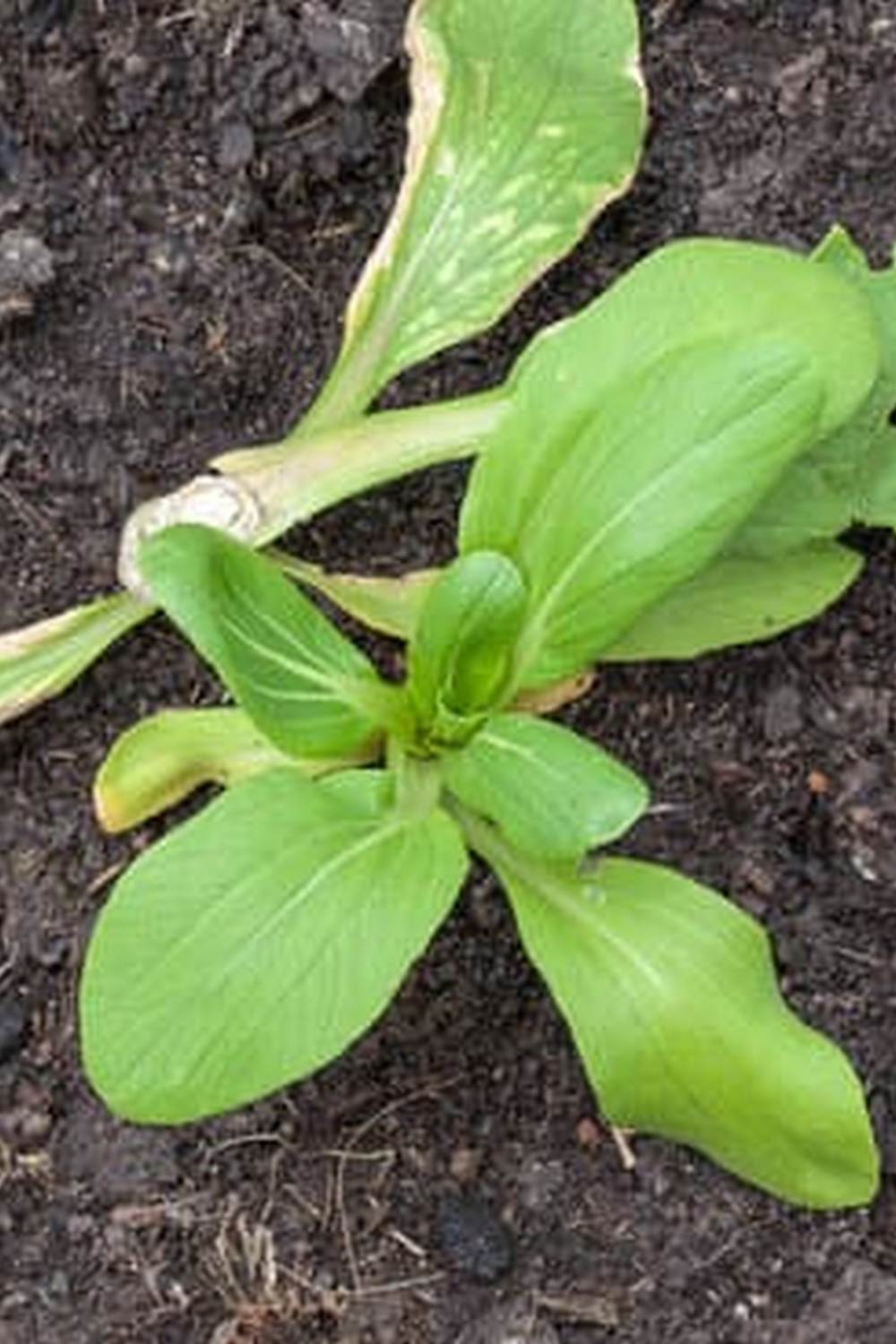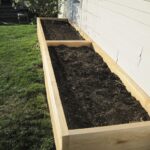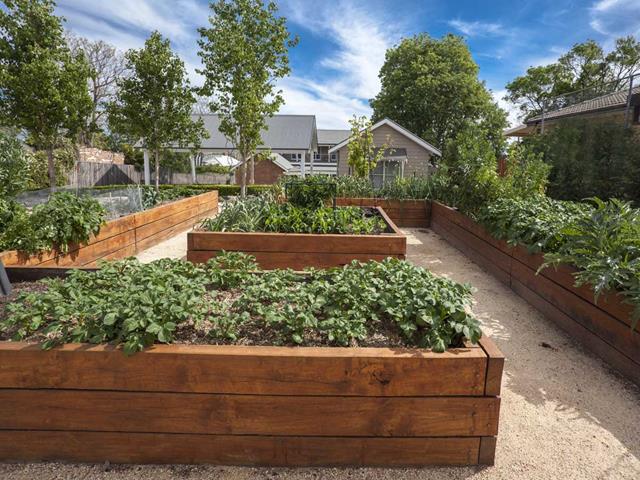Home gardening has become increasingly popular among individuals looking to experience the joy of growing their own food. With concerns about food safety, environmental impact, and a desire for fresh produce, many people are turning to home vegetable gardens. But what are most common vegetables grown in home gardens? Growing your own vegetables at home has numerous benefits, including increased freshness, better taste, and cost-effectiveness compared to store-bought produce.
One of the main advantages of growing vegetables at home is the ability to have access to fresh, nutritious produce right in your backyard. Homegrown vegetables are often picked at peak ripeness, ensuring maximum flavor and nutrient content. Additionally, growing your own vegetables allows you to control the use of pesticides and fertilizers, promoting a healthier option for you and your family.
Planning a home vegetable garden involves considerations such as sunlight exposure, soil quality, and proper spacing between plants. By carefully planning and laying out your garden space, you can optimize the growth of your vegetables and ensure a bountiful harvest. Some of the most common vegetables grown in home gardens include tomatoes, peppers, cucumbers, and zucchini. These versatile options are relatively easy to grow and offer a delicious addition to any meal.
Benefits of Growing Vegetables at Home
Growing your own vegetables at home offers a myriad of benefits that make it a rewarding and fulfilling experience. One of the primary advantages of cultivating your own produce is the unparalleled freshness that comes with harvesting vegetables right from your garden.
Unlike store-bought vegetables that may have traveled long distances and spent time on shelves, homegrown veggies are picked at peak ripeness, ensuring optimal flavor and nutrient content. Additionally, you have full control over the growing process, from selecting organic seeds to avoiding harmful pesticides and chemicals.
The taste of homegrown vegetables is another major incentive for many gardening enthusiasts. The flavor of freshly harvested tomatoes, peppers, cucumbers, and other veggies is often incomparable to their commercially grown counterparts. By nurturing plants in your garden using rich soil and proper care, you can savor the superior taste of homegrown produce in every bite. This fulfillment cannot be replicated by store-bought options, making the effort put into growing your own vegetables truly worthwhile.
Apart from freshness and taste, cultivating a vegetable garden at home can also be cost-effective in the long run. While there may be initial investments in tools, seeds, and resources required to set up your garden, the savings from not having to purchase expensive produce regularly can add up over time.
By growing commonly found vegetables in home gardens like tomatoes or zucchinis, you can significantly reduce grocery expenses while enjoying a sustainable source of fresh and healthy food right outside your doorstep.
Planning Your Home Vegetable Garden
Growing your own vegetables at home is a rewarding and fulfilling experience that allows you to enjoy fresh produce right from your garden to your table. When planning your home vegetable garden, it is essential to consider various factors to ensure the success of your crops. One of the first steps in planning your garden is selecting the right location with adequate sunlight.
Most vegetables require at least 6-8 hours of direct sunlight per day for optimal growth. Observing the sun patterns in your yard can help you determine the best spot for your vegetable beds.
In addition to sunlight, soil quality is another crucial element to consider when planning your home garden. Conducting a soil test can help you understand the nutrient levels and pH balance of your soil, allowing you to make necessary amendments before planting. Different vegetables have specific soil requirements, so it’s essential to choose plants that are well-suited to your soil type or adjust accordingly.
Spacing requirements are also important when planning your vegetable garden layout. Proper spacing between plants ensures good air circulation, reduces the risk of disease, and allows each plant enough room to grow and develop fully. Be sure to follow the recommended spacing guidelines for each vegetable variety you plan on growing in order to maximize yields and overall plant health.
| Vegetable | Grown in Home Gardens |
|---|---|
| Tomatoes | Yes |
| Peppers | Yes |
| Cucumbers | Yes |
| Zucchini | Yes |
Most Common Vegetables Grown in Home Gardens
Home gardening has become increasingly popular in recent years, with many individuals choosing to grow their own vegetables at home. There are several benefits to growing vegetables in a home garden, including the freshness of produce, better taste compared to store-bought options, and cost-effectiveness in the long run. By growing your own vegetables, you can also have more control over the methods used to cultivate them, such as using organic practices or avoiding harmful pesticides.
When it comes to deciding what to plant in your home garden, there are several common vegetables that are popular choices among gardeners. Some of the most commonly grown vegetables in home gardens include tomatoes, peppers, cucumbers, and zucchini.
These vegetables are not only easy to grow but also versatile in terms of culinary uses. Whether you prefer fresh tomatoes for salads or sauces, flavorful peppers for stir-fries or salads, crisp cucumbers for refreshing snacks, or zucchini for baking or grilling, these staples are great additions to any home garden.
To help you get started on growing these popular vegetables in your own backyard, here are some tips and guidelines:
- Tomatoes: Ensure they receive plenty of sunlight and support them with stakes or cages as they grow.
- Peppers: Plant them in well-draining soil and provide consistent watering throughout the growing season.
- Cucumbers: Give them ample vertical space to climb and keep the soil moist but not waterlogged.
- Zucchini: Plant them in nutrient-rich soil and provide regular harvests to encourage continuous production.
By incorporating these common vegetables into your home garden and following best practices for planting and caring for them, you can enjoy a bountiful harvest of fresh produce right at your fingertips.
How to Start Seeds Indoors
Starting vegetable seeds indoors is a great way to get a head start on the growing season and ensure a successful harvest in your home garden. By starting seeds indoors, you can control the growing conditions and germination process, giving your plants a better chance at thriving once transferred outdoors. Here is a step-by-step guide on how to start seeds indoors for your home vegetable garden:
Choose the Right Seeds
When selecting seeds to start indoors, it’s essential to choose varieties that are well-suited for indoor growing and will thrive in your specific growing conditions. Consider factors such as the length of your growing season, sunlight availability, and space constraints before deciding on which seeds to start indoors. Popular vegetables like tomatoes, peppers, and eggplants are great options for starting indoors.
Gather Your Supplies
Before starting the germination process, gather all the necessary supplies such as seed trays or containers, seed-starting mix, heat mats (if needed), grow lights or natural sunlight exposure, and labels for identifying each plant variety. Make sure your supplies are clean and sterilized to prevent any issues with mold or diseases affecting your seedlings.
Planting Seeds
Fill your seed trays or containers with moistened seed-starting mix, then plant the seeds according to the recommended depth and spacing provided on the seed packet. Label each tray or container with the plant variety to keep track of what you have planted. Keep the soil consistently moist but not soggy during the germination period, and provide adequate warmth either through a heat mat or by placing trays in a warm location in your home.
By following these steps for starting vegetable seeds indoors, you can ensure a successful beginning to your home gardening journey and enjoy healthy plants ready for transplanting once the outdoor growing season arrives. Remember to monitor your seedlings regularly for growth progress, adjust light levels as needed, and gradually acclimate them to outdoor conditions before transplanting them into your garden.
Caring for Your Vegetable Garden
When it comes to maintaining a healthy and thriving vegetable garden, proper care is essential. This involves ensuring that your plants receive adequate water, nutrients, and protection from harmful pests. By following some simple guidelines, you can help your homegrown vegetables reach their full potential and yield a bountiful harvest.
Watering Your Vegetable Garden
One of the most critical aspects of caring for your vegetable garden is providing the right amount of water. Vegetables need consistent moisture to grow properly, but overwatering can lead to root rot and other problems.
It’s important to water deeply but infrequently, allowing the soil to dry out slightly between each watering. The best time to water is in the morning, as this gives the plants ample time to absorb the moisture before the heat of the day sets in.
Fertilizing Your Vegetable Garden
In addition to water, vegetables also require essential nutrients to thrive. Fertilizing your garden with a balanced fertilizer will help ensure that your plants have everything they need to grow strong and healthy. Consider using organic fertilizers or compost to provide natural nutrients to your garden beds. Be sure to follow recommendations for application rates and timing based on the specific needs of each type of vegetable you are growing.
Pest Control Methods
One common challenge that home gardeners face is dealing with pests that can wreak havoc on their vegetable crops. From insects to diseases, there are various threats that can threaten the health of your plants.
Implementing pest control methods such as companion planting, hand-picking pests off plants, or using organic pesticides can help protect your vegetables without harmful chemicals. Regularly inspecting your plants for signs of pests or diseases and taking prompt action can prevent infestations from spreading and damaging your entire garden.
By paying close attention to watering, fertilizing, and pest control in your vegetable garden, you can set yourself up for success in growing a thriving and productive harvest of homegrown vegetables. With proper care and maintenance throughout the growing season, you will be able to enjoy a bountiful supply of fresh produce straight from your backyard.
Harvesting and Enjoying Your Homegrown Vegetables
Homegrown vegetables are not only rewarding to grow, but they also provide an abundance of freshness and flavor that store-bought produce may lack. When it comes to harvesting your homegrown vegetables, timing is crucial for optimal taste and texture.
One of the most common mistakes gardeners make is harvesting too early or too late, which can affect the overall quality of the vegetables. For example, tomatoes should be harvested when they are fully ripe on the vine for the best flavor, while cucumbers are best picked when they are still firm and have a glossy skin.
In addition to knowing when to harvest your vegetables, understanding the proper techniques for harvesting each type of vegetable is essential. Some vegetables like lettuce and spinach can be harvested by simply picking individual leaves as needed, while others such as eggplants and bell peppers should be cut off the plant using sharp pruners or scissors to avoid damaging the plant.
It’s important to handle your freshly harvested vegetables with care to prevent bruising or spoilage. Storing them properly in a cool, dark place or in the refrigerator can help prolong their freshness and shelf life.
Once you have successfully harvested your homegrown vegetables, there are endless possibilities for enjoying them in delicious recipes. From fresh salads with colorful tomatoes and crisp cucumbers to savory stir-fries made with zucchini and peppers, homegrown produce can elevate any dish with its superior taste and quality. Experimenting with different cooking methods and flavor combinations can help you fully appreciate the fruits of your labor from your bountiful home garden.
| Vegetable | Commonly Grown in Home Gardens |
|---|---|
| Tomatoes | One of the most popular home-grown vegetables due to their versatility in cooking and incredible flavor |
| Peppers | Bell peppers, jalapenos, and other varieties add a burst of color and spice to dishes grown right from your garden |
| Cucumbers | Refreshing and crunchy cucumbers are commonly grown for salads, pickling, or snacking fresh off the vine |
Troubleshooting Common Vegetable Garden Problems
Home gardeners may encounter various challenges when growing vegetables in their gardens, including pests, diseases, and nutrient deficiencies. These issues can be frustrating but with the right knowledge and solutions, they can be effectively addressed. One common problem that gardeners face is pests, such as aphids, caterpillars, and beetles, which can damage plants and reduce yields. Implementing natural pest control methods like companion planting or using organic insecticides can help prevent and manage these unwanted visitors.
Diseases are another common issue that home gardeners may come across in their vegetable gardens. Fungal diseases like powdery mildew or bacterial infections can impact the health of plants if left untreated. To combat these diseases, practicing good sanitation by removing infected plant parts, providing proper air circulation, and using disease-resistant varieties are essential strategies to protect your vegetable crops.
Nutrient deficiencies are also a prevalent problem in home gardens that can affect the growth and productivity of plants. Lack of essential nutrients like nitrogen, phosphorus, or potassium can lead to stunted growth, yellowing leaves, or poor fruit development. Conducting soil tests regularly to determine nutrient levels and applying organic fertilizers or compost to replenish depleted nutrients can help maintain a healthy balance in your garden soil.
In conclusion, while encountering problems in your vegetable garden is inevitable, being proactive and implementing preventive measures can help mitigate these issues effectively. By staying informed about common pests, diseases, and nutrient deficiencies that affect homegrown vegetables and utilizing sustainable gardening practices, you can enjoy a bountiful harvest of fresh and delicious produce from your own backyard garden.
Frequently Asked Questions
What Are the Most Popular Vegetables to Grow in Your Garden?
The most popular vegetables to grow in gardens are tomatoes, cucumbers, bell peppers, zucchini, carrots, and lettuce. These vegetables are favored for their relatively easy cultivation and delicious flavors.
What Is the Most Common Food Grown in Home Gardens?
The most common food grown in home gardens is tomatoes. Tomatoes are versatile, nutritious, and widely used in various cuisines. Their popularity can be attributed to the ease of growing them in a backyard garden.
What Are the 10 Easiest Vegetables to Grow?
Some of the 10 easiest vegetables to grow include radishes, green beans, spinach, lettuce, cherry tomatoes, peas, zucchini, peppers, cucumbers, and carrots. These vegetables require minimal maintenance and are ideal for beginner gardeners looking for a successful harvest.

If you’re looking to get into vegetable gardening, or are just looking for some tips on how to make your current garden better, then you’ve come to the right place! My name is Ethel and I have been gardening for years. In this blog, I’m going to share with you some of my best tips on how to create a successful vegetable garden.





